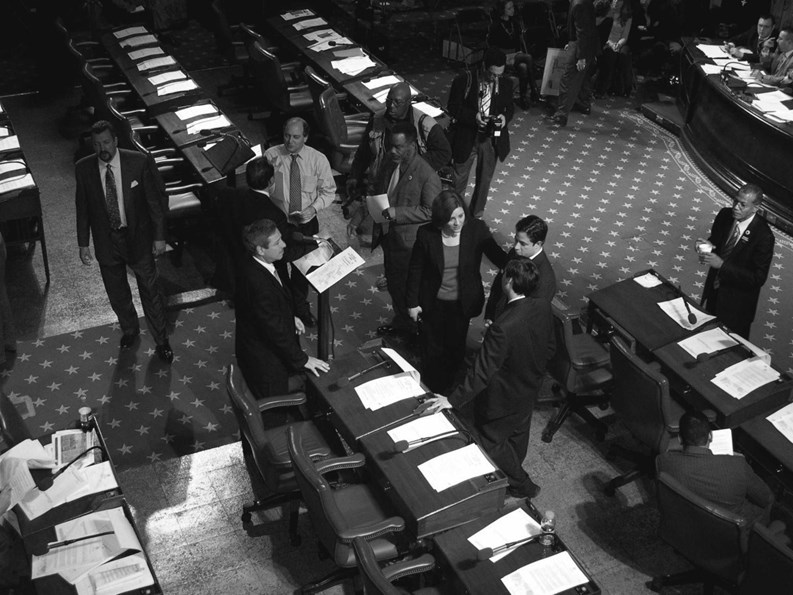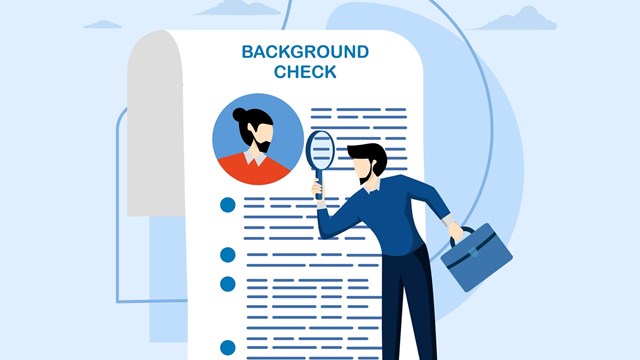Perhaps Benjamin Franklin said it best: “In this world, nothing can be said to be certain except death and taxes.”
And taxes aren’t just a certainty for co-op and condo buildings—they’re a complicated part of keeping a building community financially solvent and sound. Navigating the property tax waters and making sure your building gets every penny’s-worth of rebates and abatements owed it is a big job—for boards, management, and their hired financial professionals. Fortunately, there’s plenty of information available on which programs and givebacks your building may be able to take advantage of. Here’s a look at two programs that can save your building money at tax-time.
A Capital Idea
The J-51 tax abatement program was implemented in 1955 as a way to encourage building owners to install hot water plumbing in their properties. Since then, the program has expanded to include just about every major capital improvement you could name, including things like window replacements, elevator replacements and upgrades, electrical rewiring, major roof repair, plumbing overhauls, major façade work, and sewer line repairs. In addition to benefiting landlords, the J-51 abatement is also available to developers converting commercial or industrial buildings to residential, and to rental buildings converting to co-op or condo.
“[The J-51 abatement] is just a lovely gift from the city, started in the 1950s, to keep the city viable,” says Mary Ann Rothman, president of the Council of Cooperatives and Condominiums (CNYC). “Originally, the government allowed three years of J-51 eligibility after a building closed as a co-op or condo,” recalls Rothman. “It was clear to [the council] that first of all, it took a co-op a length of time to learn what physical improvements were needed and to accumulate the money to do that. Three years wasn’t nearly long enough, so we got to work lobbying to make our representatives understand that just because people owned a co-op didn’t mean they immediately knew how to deal with the program.”
In 1988, the council won an important victory: there is now no limit on the number of times co-ops or condos can apply for the abatement program.
“It was quite an achievement,” recalls Ed Tristram, a J-51 consultant based in Manhattan. The only problem these days, he adds, is that not enough co-ops and condos take advantage of the abatement. Despite the fact that filing for a J-51 can be somewhat complicated, says Tristram, “the potential benefits are at least worth taking a look at.”
J-51 Abatement Basics
Paul Korngold, an attorney specializing in real estate tax law, offers a brief primer to boards and buildings getting ready for their first J-51 filing:
First, the application to apply for the abatement is available through the city’s Department of Housing and Preservation Development (HPD), which has been administering the abatement since it was created. Applications must be filed within two years of a capital improvement project beginning, or no more than four years after the project has ended.
If the application is approved, HPD gives the building a “certificate of eligibility,” which the building must then file with the city’s Department of Finance. The Department of Finance then puts the credit into the computer and adjusts the building’s taxes accordingly, for the duration of the abatement period.
Essentially, the tax abatement serves as a credit used to reduce the building’s real estate tax bill. The abatement period can last for “as little as six years and as many as 20 years,” says Korngold, with most co-ops and condos averaging 11 years for the abatement. Benefits are based on a calculation of what the city considers a reasonable cost for the work.
Real-World Savings
J-51 experts are quick to point out that qualifying for and receiving a tax abatement isn’t as simple as it might sound—and the difference between what the HPD asserts is a “reasonable cost” and what buildings actually pay out-of-pocket for improvements can be quite different.
“For a lot of jobs,” says Tristram, “the abatement runs from 40 percent to 70 percent of the actual cost of the work, and then that abatement is just a dollar-for-dollar reduction in taxes over 10.8 years, subtracted right from the tax bill.”
He offers an example: a 104-unit co-op on Schermerhorn Street in Brooklyn Heights hired him to file a J-51 for a boiler replacement, which cost $240,000. The HPD determined that the “reasonable cost of replacement” was actually $158,000—“and that’s the number [the co-op] got 90 percent of,” says Tristram.
In another example, another Brooklyn Heights building redid their windows at a cost of $242,696. Because the building is landmarked, the “reasonable cost” assigned by HPD—$242,600—was much closer to the actual cost of the project. “Their tax abatement was much larger because of their [landmark status,]” says Tristram.
Who’s Eligible?
While the rules surrounding the eligibility requirements for J-51 abatements can be complicated, there are some basic guidelines. Buildings with as few as three or as many as 6,000 dwelling units are eligible, according to Rottenstein Associates, and vacant buildings undergoing a gut rehabilitation may also qualify.
As far as how the HPD determines whether co-ops and condos are financially eligible for a J-51, “It’s a two-tiered test,” explains Robert Grant of Midboro Management in Manhattan. “They look to see if 10 percent of the units have sold in the three years preceding the start of construction. If they have, then the per-room sale price has to be below a certain number. That number changes from time to time because it’s linked to the national Fannie Mae maximum mortgage amount for a single-family house. If less than 10 percent of the units were sold, then they look only at the assessed valuation of the unit, which has to be $40,000 or less.”
According to Meir Mishkoff, a real estate consultant based in Queens, “I find that the J-51 is straightforward—but not straightforward enough that a board would want to take it upon itself to file. The biggest problem I find with co-ops and condos are the violations. An application won’t be approved until all Building Department violations are dismissed—and 99 percent of the time, an application is delayed getting completed due to an open Building Department violation.”
And Now, the 421-a
Faced with a housing shortage and looming fiscal crisis in the early 1970s, New York State created the 421-a tax exemption to encourage developers to build up the city’s residential stock. The 421-a program grants a partial tax exemption to developers of new construction for a period of 10, 15 or 25 years.
To take advantage of the 421-a program, developers must apply for the benefit in the window between the time construction begins and the building’s Certificate of Occupancy is issued. Co-ops, condos, and rental buildings are eligible—though rental buildings must meet certain rent regulations to be included.
A market rebound in the 1980s prompted the city to create a “geographic exclusion area,” also known as an exclusion zone, between 14th and 96th streets, which limited eligibility for the program to developers who agreed to build affordable units for low income families, either by making 20 percent of their units affordable or by purchasing “negotiable certificates” which were used to create affordable housing elsewhere in the city. A 2003 study by the city’s Independent Budget Office (IBO), though, found that from 1985-2002 only seven percent of the 69,000 units subsidized through the program were available to low or moderate income families.
“A 421-a applies to new construction,” says Mishkoff. “You’ll hardly ever see a board, shareholders, or condo owners filing a 421-a. What’s important for someone buying into a building that is receiving 421-a benefits—if the building isn’t brand-new—is to look to see at what point they are in the exemption period. If the exemption is expiring in a year or two, what looks like relatively low taxes may go up very sharply once those benefits expire.”
Mishkoff says it’s easy for buyers to be seduced by a building’s low maintenance or common charges; charges that can shoot up when the 421-a exemption ends. “The 421-a is in the hands of the developer. It’s nothing the shareholders can really get involved with. The J-51 is just the opposite. The boards are very much involved in that,” says Mishkoff.
Old Debate, New Developments
The cooperative and condominium abatement program under 421-a provides partial tax relief for condo owners and co-op shareholders to reduce the disparity in property taxes paid between residential Class 2 properties (co-ops and condos) and residential Class 1 properties (i.e., one-, two-, and three-family homes). Under 421-a, tax abatements are applied for by the developer and granted by the city to offer incentives to building and marketing of new units of housing. With a 10-year abatement program, the building and its individual units get relief for the first 10 years of occupancy. Real estate taxes would be lowest in the early years of occupancy and rise each year until the abatement expires.
The beneficiaries of the 421-a program aren’t always the lower- and middle-income families intended by the original lawmakers, however. According to a recent article in the New York Post following an investigation of city tax records, designer Calvin Klein gets a $134,450 annual tax break on his Richard Meier-built Perry Street penthouse. Yankee shortstop Derek Jeter saves $130,000 a year on his $4 million Trump World Tower apartment, and actress Natalie Portman saves $26,300 annually on her $5.8 million condo.
To address the debate over stricter limits on tax breaks for developers and shareholders of new residential buildings, the New York City Council voted on December 20, 2006 to accept Speaker Christine C. Quinn’s version of an amendment to the 421-a tax exemption program. Quinn’s bill, which Mayor Michael R. Bloomberg subsequently signed into law was passed during the final moments of the 2006 legislative session, ending a citywide tussle in which community development and affordable housing advocacy groups vied with the luxury property development lobby to protect their constituents’ interests.
“As development in New York City continues to thrive, the City Council is working to ensure that working families are not being priced out of their communities,” Quinn declared. “The creation of affordable housing remains a major priority for the council, and for all New Yorkers. This bill will create even more affordable housing, encourage development in communities where it is still needed, and protect taxpayer dollars from over-subsidizing new luxury development,” added Quinn.
The new legislation grants 25 years of benefits only to developments that provide affordable housing. It sets a limit on the total amount of 421-a tax benefits that any market rate unit may receive. Under the new rules, only the first $65,000 of an apartments assessed value will receive the exemption. It also abolishes the existing negotiable certificates program and establishes a $400 million Affordable Housing Trust Fund. The fund will target the city’s 15 poorest neighborhoods, the goal being to finance the development and rehabilitation of affordable housing in areas outside of the Geographic Exclusionary Areas (which are the special exclusion zones). In addition, every two years, a joint Council-Mayoral Commission will review the exclusion zone to determine its relevance to the current real estate market.
“This legislation encourages new construction throughout the five boroughs and advances our $7.5 billion New Housing Marketplace Plan, the largest municipal affordable housing plan in the nation’s history,” said Bloomberg in a statement. “We are pleased that a broad coalition of City Council members voted in favor of this amended bill introduced by City Council Speaker Christine Quinn. I want to thank Speaker Quinn and her staff as well as Housing and Buildings committee chair Erik Martin Dilan for working closely with the Administration to develop sound changes to this important program that will eliminate the unnecessary tax breaks for luxury developments.”
Whether you’re a prewar building looking to overhaul your windows or replace your roof, or thinking of moving into a brand-new building in a hot neighborhood in Manhattan, it’s good to know what the tax ramifications of either decision might be. Whatever the circumstances, Tristram has parting advice for board members navigating the city’s tax abatement system: “Do not try and do it yourself. Hire a lawyer. The instructions are not perfectly clear and the pitfalls are very costly.”
Amy Blankstein and Hannah Fons are associate editors of The Cooperator.







4 Comments
Leave a Comment